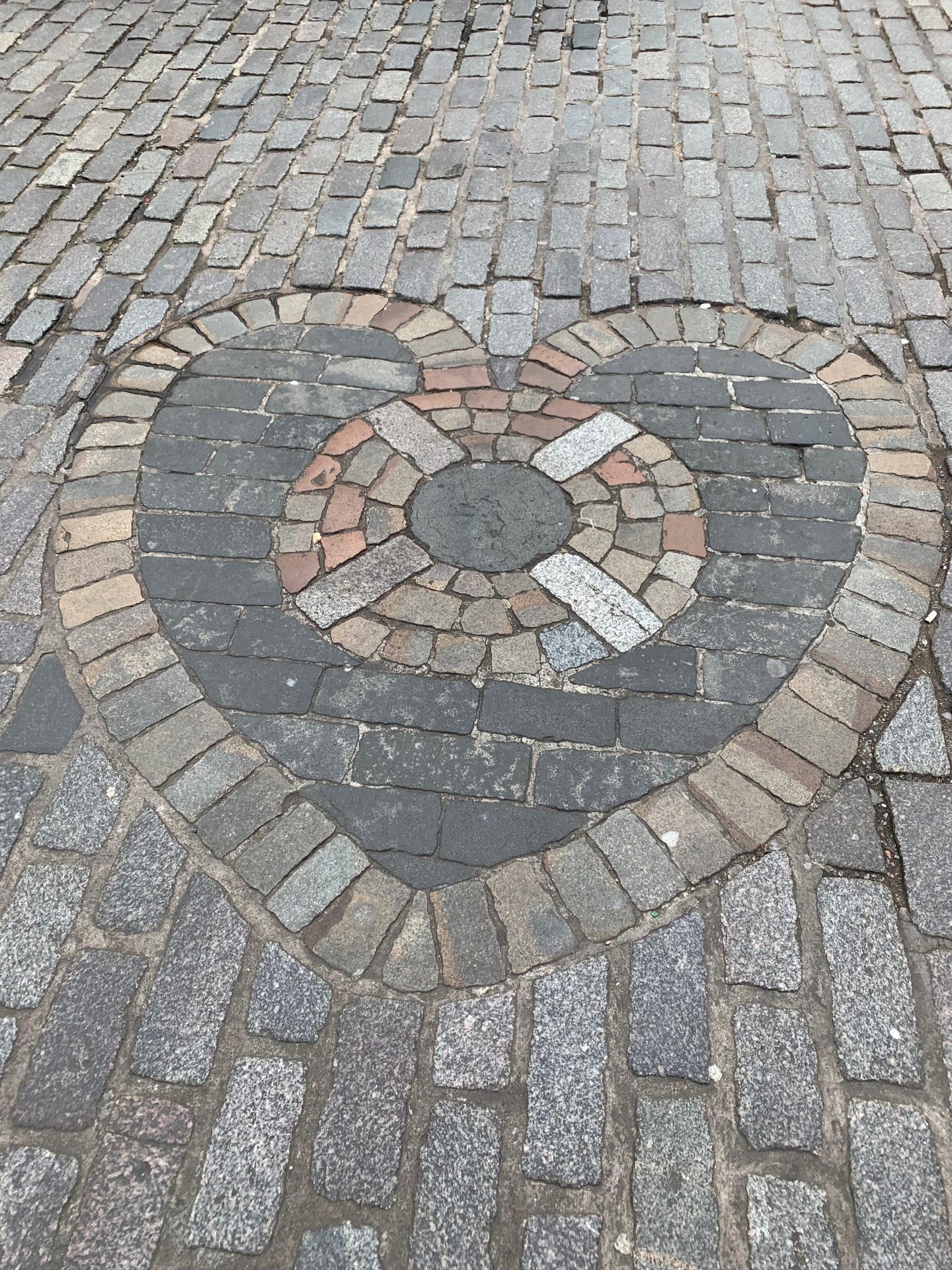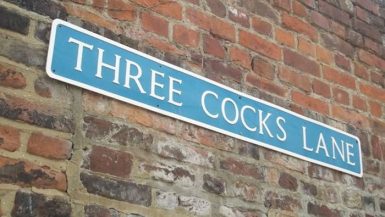
The Heart of Midlothian: Edinburgh’s Stone of Secrets
Walk the Royal Mile on any given day and you’ll see it—a heart-shaped mosaic set into the cobblestones just outside St Giles’ Cathedral. Tourists pause, puzzled, as locals stride past and, without breaking step, spit squarely on the granite heart. It’s a curious ritual, one that seems almost irreverent in the shadow of the city’s great kirk. But this is no random act. That heart marks the site of one of Edinburgh’s most infamous buildings: the Old Tolbooth. And its story is as dark and tangled as the wynds that twist through the Old Town.
A Heart in Stone, A History in Blood
The Heart of Midlothian isn’t just a decorative flourish. It’s a memorial—quiet, understated, and yet deeply symbolic. Beneath your feet once stood the Old Tolbooth, a squat, brooding structure that dominated the High Street for more than four centuries. Built in the late 14th century and rebuilt in 1561, the Tolbooth was the administrative hub of Edinburgh, the seat of the burgh council, and a meeting place for the Scottish Parliament. But its most notorious role was as a prison.
The Tolbooth was no ordinary jail. It was a place of misery, a grim warren of cells where debtors rubbed shoulders with murderers, political prisoners, and accused witches. Conditions were appalling—filthy, airless rooms, stinking drains, and overcrowding so severe that disease was rife. Torture was not uncommon. Instruments like thumbscrews and iron collars were used to extract confessions or enforce obedience. For those condemned to death, the Tolbooth was the last stop before the gallows.
Public Spectacle and Private Horror

In the early years, executions took place in the Grassmarket, a short walk downhill, where crowds gathered to watch the hangman ply his trade. But in 1785, the city moved the gallows to the Tolbooth itself. A timber platform was built above the entrance so that hangings could be staged in full view of the High Street. It was a macabre theatre: the condemned paraded before jeering crowds, the rope swinging against the backdrop of St Giles’ spire.
Heads of the most notorious criminals were impaled on spikes along the Tolbooth walls—a grisly warning to others. Among those who met their fate here were Deacon Brodie, the respectable cabinetmaker turned burglar whose double life inspired Dr Jekyll and Mr Hyde, and Captain John Porteous, lynched by an angry mob during the riots of 1736 after ordering his men to fire on civilians. The building became a byword for cruelty and corruption, a place feared and loathed in equal measure.
The Spitting Tradition: From Contempt to Good Luck
So why do people spit on the Heart of Midlothian? The custom began as an act of defiance. In the Tolbooth’s heyday, locals spat at its door to show their contempt for the harsh justice meted out within. Prisoners themselves may have spat on the threshold as they were released—a final gesture of scorn toward the system that had caged them.
When the Tolbooth was demolished in 1817, the memory of its tyranny lingered. The heart-shaped mosaic was later laid to mark the spot, and the spitting tradition endured. Over time, its meaning softened. Today, most people spit on the heart for good luck, or simply because “it’s what you do” in Edinburgh. Guides will tell you it’s the only place in Britain where spitting in public is not frowned upon. Still, the act carries a faint echo of rebellion—a reminder that beneath the city’s polished veneer lies a history of struggle and resistance.
Sir Walter Scott and the Heart’s Literary Legacy
The Heart of Midlothian owes much of its fame to Sir Walter Scott. In 1818, a year after the Tolbooth’s demolition, Scott published his novel The Heart of Midlothian, weaving real events—the Porteous Riots, the plight of Jeanie Deans—into a sweeping tale of justice and mercy. The book cemented the Tolbooth’s place in Scottish cultural memory and gave the heart its enduring name. Scott even salvaged the prison’s iron door for his home at Abbotsford, a relic of the building that had haunted his imagination.
The novel’s success rippled beyond literature. When a group of Edinburgh lads formed a football club in 1874, they borrowed the name for their team: Heart of Midlothian F.C., known simply as “Hearts.” The club’s badge—a maroon heart—echoes the mosaic on the Mile, binding sport, story, and stone in a single emblem.
What the Heart Represents Today
Stand by the Heart of Midlothian now and it’s hard to picture the scenes that once unfolded here: the clatter of chains, the cries of the condemned, the roar of the crowd as the trapdoor fell. The Royal Mile hums with tourists, buskers, and festival chatter. St Giles’ bells peal above the cobbles. Yet the heart remains—a quiet witness to centuries of civic life, from medieval council meetings to Enlightenment debates, from witch trials to Jacobite conspiracies.
Look closely and you’ll see brass markers in the pavement tracing the Tolbooth’s outline. Pause for a moment and imagine the building’s jagged silhouette, its doorway dark as a mouth. Then, if you want to honor tradition, spit on the heart. Whether you do it for luck or for history, you’re taking part in a ritual that spans generations—a small, salty link to Edinburgh’s past.
A Symbol of Contradictions
The Heart of Midlothian is more than a tourist curiosity. It’s a symbol of Edinburgh itself: beautiful yet brutal, romantic yet ruthless. It speaks of a city that has always balanced law and liberty, order and rebellion. For centuries, the Tolbooth enforced authority with an iron fist. Today, the heart that marks its place invites a gentler gesture—a spit, a smile, a story shared.
So next time you walk the Royal Mile, don’t just glance at the mosaic and move on. Stop. Think of the lives that ended here, the riots that shook the city, the novelist who turned history into art. Then lean down, let fly, and walk away with a little luck—and a lot of Edinburgh—in your step.



